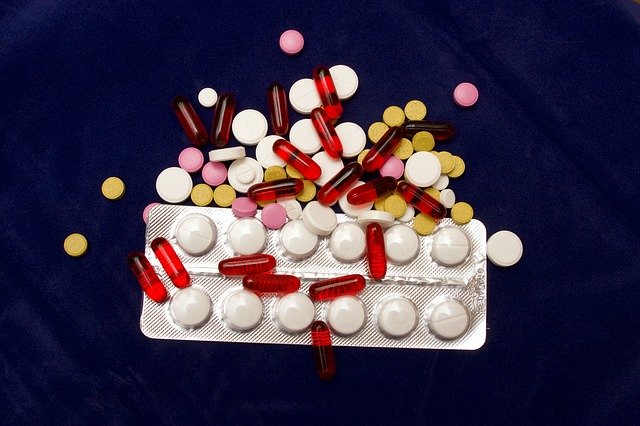I’m working on a new book that I’m super excited about! I’m writing a book on drug interactions and hope to finish by the end of the year! I’m tackling the top 200 drugs plus those I consider very clinically relevant in practice. My hope is that it is a perfect resource for ambulatory care, geriatric, and community pharmacists, as well as for our fellow family medicine and primary care providers! Feedback and suggestions on topics I must cover are welcomed, just comment below!! I wanted to provide a small excerpt about carbamazepine interactions.
Carbamazepine Can Interact With Carbamazepine?
Yes, you are reading that correctly. In one of the most unique twists with drug interactions, carbamazepine can actually stimulate the metabolism of itself. While this is really intriguing, what you really want to know is what to do with this clinically?
Here’s the easy answer to this question…it depends. I think I’ve stressed this plenty of times throughout the book already, but you have to know what you are treating. With carbamazepine, we typically monitor and shoot for target levels in patients with epilepsy or bipolar disorder. In patients with trigeminal neuralgia, we usually treat to symptom relief and only assess levels if trying to rule out toxicity.
Back to why this matters. In patients that we are trying to maintain steady levels, these levels can vary significantly within the first few weeks and up to a month or two following initiation because of enzyme induction. Levels can be initially higher and once autoinduction ramps up, they may drop significantly. Clinical monitoring as well as checking levels is important upon initiation until a patient’s level is deemed stable. In situations where we are not shooting for a target level, we may only do this to monitor for risk of toxicity versus targeting a goal for therapeutic benefit.
Enzyme Induction – Carbamazepine Interactions
Whenever I see an order for carbamazepine, I have alarms going off in my head. Carbamazepine is an enzyme inducer. The primary cause of the majority of drug interactions is due to the induction of CYP3A4. P-glycoprotein induction may also play a significant role in some drug interactions. In most situations, the carbamazepine will reduce concentrations of other medications.
Anticoagulants like apixaban, rivaroxaban, warfarin, and dabigatran can all have their concentrations reduced. The result of this can be catastrophic by increasing the risk of stroke. Certain antipsychotics can have their effectiveness reduced. Many HIV medications will also interact with carbamazepine. Antibiotics and many antidepressants can have significant interactions with carbamazepine. There are simply too many drug interactions to list with this drug. I cannot overstate this. I also do not have them all memorized. When I have a patient on carbamazepine, I run a drug interaction profile to ensure the patient is not taking other medications that interact with it. Rather than attempt to memorize all the potential interactions, this is what I would recommend you do as well.
CYP1A2 Induction
Carbamazepine can be responsible for the induction of CYP1A2 as well. This is generally considered to be a much smaller impact than the CYP3A4 induction. Antipsychotics like clozapine and olanzapine can have their concentrations reduced on account of the interaction with carbamazepine.
Hyponatremia
Drug-induced SIADH is a real possibility with carbamazepine. Because of this, if the patient is experiencing any symptoms of hyponatremia like sedation, confusion, nausea, vomiting, or weakness, these drugs should be reassessed. When carbamazepine is used with other agents that may cause hyponatremia, this risk is amplified. The use of diuretics like hydrochlorothiazide or chlorthalidone may increase this risk. In addition, other medications that have been associated with SIADH may have a compounding type effect.
The urgency of dealing with this drug interaction is going to be largely dependent upon the severity of hyponatremia. If a patient is displaying CNS symptoms and/or their sodium level is in the 120’s mEq/L or less, these drugs will likely have to be stopped unless there is another identifiable cause. If carbamazepine is being used for seizures, this obviously gets a lot more tricky. If the patient has mild hyponatremia, such as a level in the low 130’s mEq/L and is not displaying symptoms, some clinicians may decide to continue to monitor sodium levels and leave the medications in place. Weighing the risk of complications from hyponatremia compared to the benefit of drug therapy is critical. If other options are available that are less likely to cause hyponatremia, switching medications seems like the best option.
I hope you found this useful, stay tuned to the blog for when the book on drug interactions is complete!
- 30 medication mistakes PDF
- 18+ Page Drug Interaction PDF
- 10 Commandments of Polypharmacy Webinar based on my experiences in clinical practice



I really hope you’re able to finish your book as I read your blogs religiously during my lunch breaks and, a book would be more enjoyable! I referred my coworker to look into you and she passed her board certification after using your materials!
Thank you so much Lori!!! I’m hoping to wrap it up by end of December or possibly end of January at the latest depending upon how much time I can make for myself 🙂